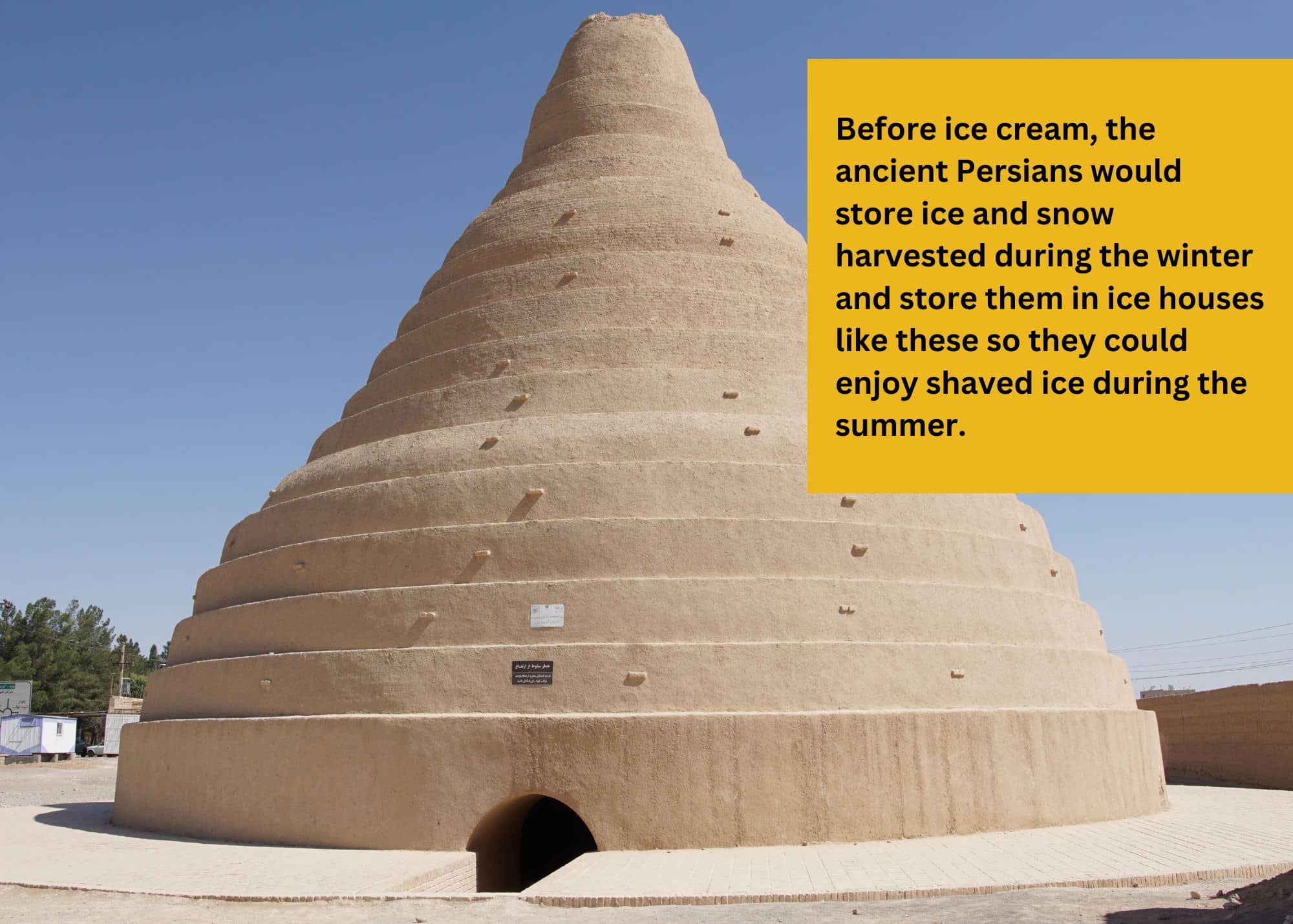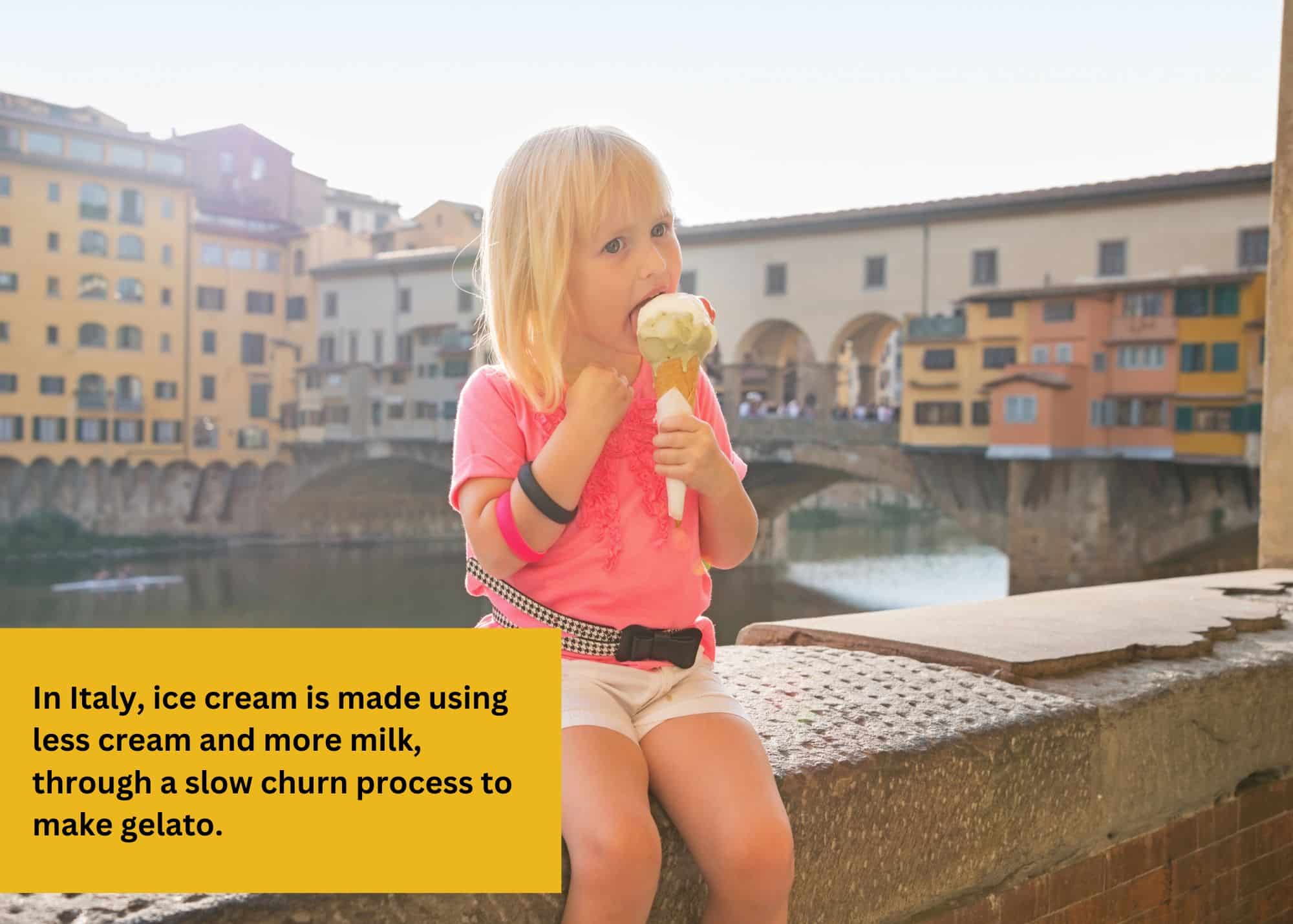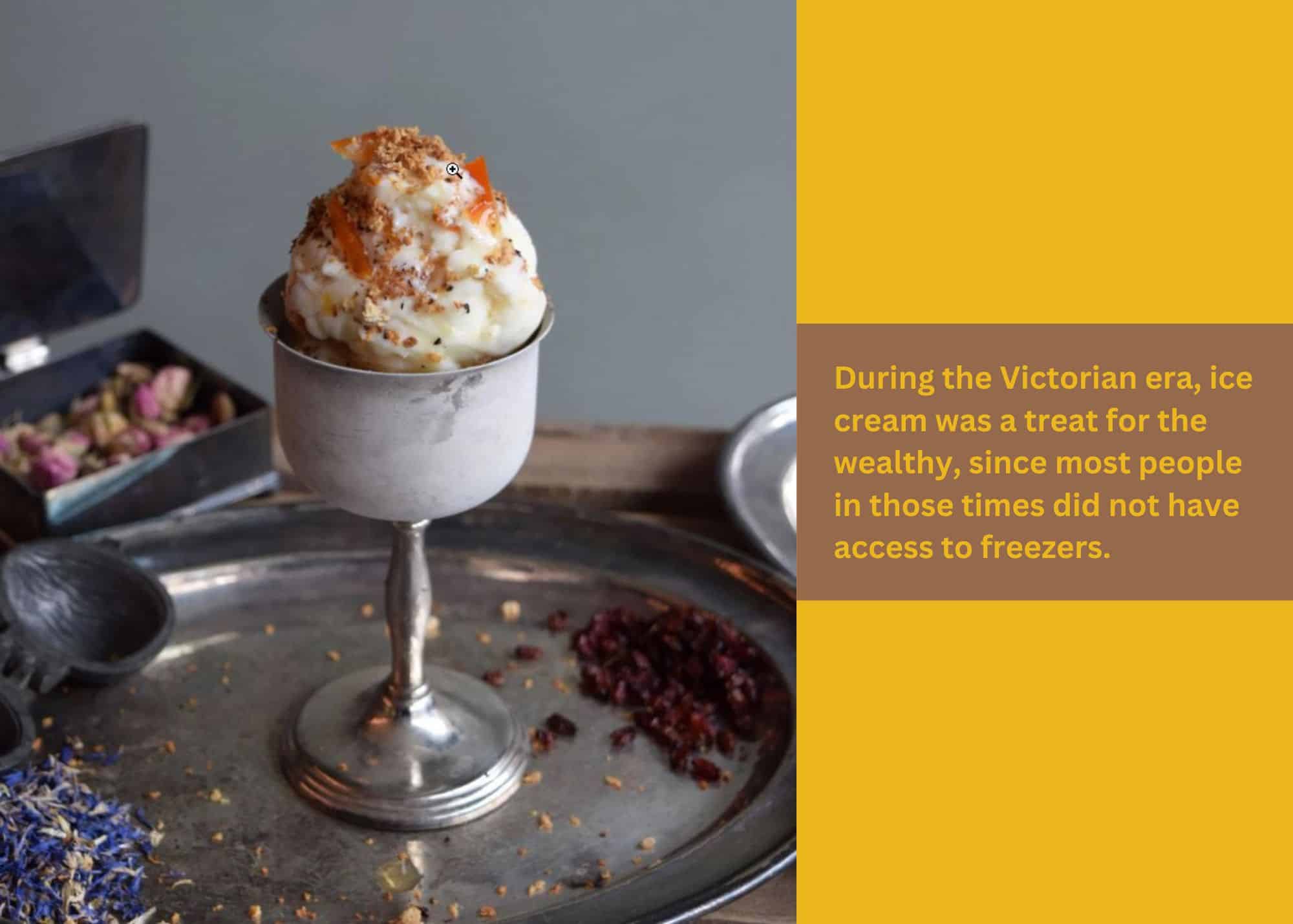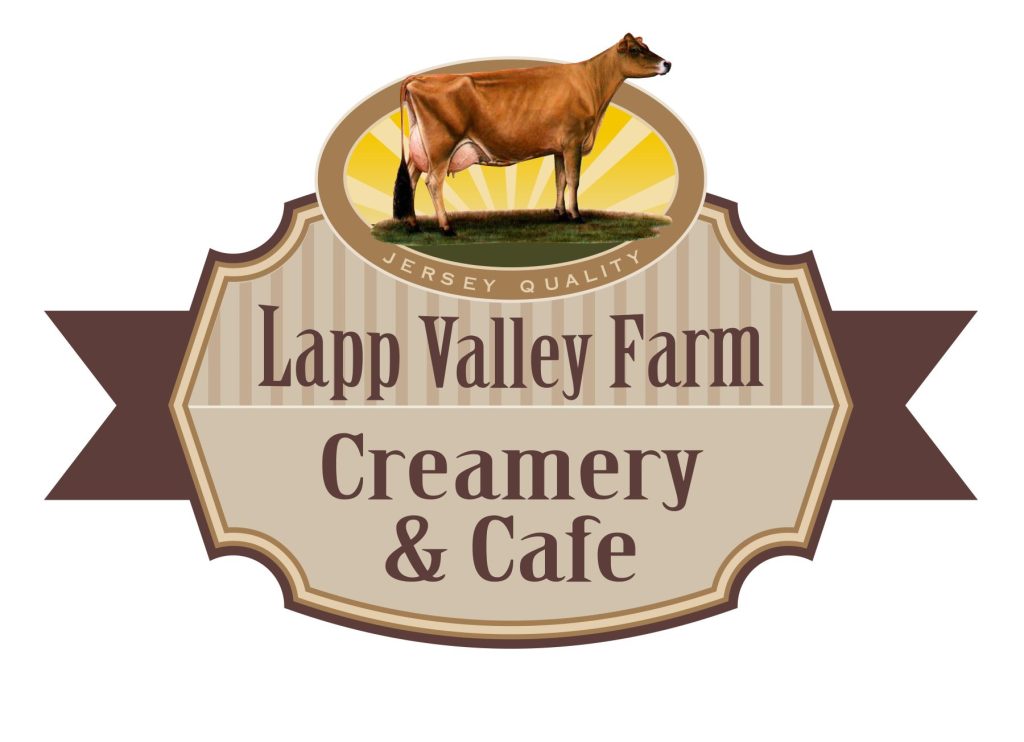Who Invented Ice Cream? The Delicious History of This Frozen Treat
It’s a hot summer day, and as the heat radiates from the blacktop and beads of sweat accumulate at the base of your neck, you pass an ice cream shop.
How can you resist?
Soon, the cold sweetness of your favorite ice cream fills your mouth, cooling and refreshing you.
Pure bliss.
But while munching on your cold treat, do you ever stop to wonder who invented ice cream and how people managed to make it before freezers were invented?
Ice cream has a long, delicious history, and at Lapp Valley Farm, we aim to continue the ancient tradition of creating yummy treats for those unbearably hot days.
Come along with us as we explore the history of ice cream!
Ancient Ancestors of Modern Ice Cream
These days, enjoying a cold treat on a hot day is as easy as buying some popsicles at the corner store or cooling your drink with ice from your freezer.
It may be tempting to think that cold desserts like ice cream are a modern invention. After all, how could people in ancient times possibly make frozen treats in summer?
But cold deserts have been around almost as long as humans have recorded their history.
For example, Persian recipes from over 2,500 years ago show that they were dining on frozen desserts. In the Bible, Proverbs 25:13 says, “Like a snow-cooled drink at harvest time is a trustworthy messenger to the one who sends him; he refreshes the spirit of his master.”
How did people so long ago have access to snow and ice in warm seasons?
Long before modern freezers were invented, there were two ways to attain ice or snow in the summer: you could send someone to a high mountain to fetch some, or you could harvest it in winter and store it in an ice house, where it would be insulated by straw or sawdust and used in summer.

But although ancient people used ice and snow to make cold drinks and shaved-ice desserts, ice alone is not cold enough to freeze cream into ice cream. At some point in history—no one is sure when—people discovered the endothermic process. They realized that if they added salt to ice, it got colder, allowing them to make frozen treats.
The Persians were probably the first to use the endothermic process to make frozen desserts similar to ice cream. Both “sherbet” and “sorbet” come from the Persian word “sharbat,” which is a cold drink made with herbs and fruit. It’s likely that when the Persians discovered the endothermic process, they used it to freeze their sharbat drinks into an ice-cream-like sorbet.
European Ice Cream Legends
Ice cream is a legendary food. Wouldn’t you agree?
Although the history of ice cream is not particularly well-documented, legends abound. Some people say that Moorish traders brought ice cream to Europe, while others say that Marco Polo ate sorbet-style dishes in China and thought they were so delicious that he brought the recipe back to Italy with him.
However, one thing seems certain: somehow, the Italians discovered sorbet-style desserts and put their own spin on the treat, making it out of milk and cream to create ice cream—or, as they called it, “gelato.”

But from there, all we have is legends again. For example, they say that when the Italian noblewoman Catherine de' Medici married a French prince, she took the gelato recipe with her, introducing it to the French nobility.
There’s also a legend that King Charles I of England had a French chef who introduced him to the dish. The story goes that the king was so obsessed with this delicious treat that he offered his chef 500 pounds a year to keep the recipe secret so that only the nobility could eat it.
While none of these stories are backed by historical evidence, the fact that so many legends surround the invention of ice cream shows how legendary this treat is.
Recipes are rarely invented out of thin air. Usually, they come about when people experiment and play around with existing foods, creating a unique spin on things.
Because of that, it’s impossible to say who invented ice cream. Several people might have discovered the basics of ice cream making independently of each other.
But the fact that we have all these legends shows that ice cream has always been special, and people have cared enough about it to continue telling these stories.
Ice Cream for the Common Folk
Although we have no way of knowing if King Charles I actually paid his chef to keep the ice cream recipe for nobility only, it is true that in the early days of ice cream, it was mainly eaten by rich people.
Why?
Because to make ice cream in summer, you must have access to ice. And as we discussed earlier, people back then didn’t have basic freezers like we do today. Ice cream was for wealthy people—those who had their own ice house.

But as the 18th century bled into the 19th century, things began changing as some bright entrepreneurs discovered ways to bring ice cream to the masses.
For example, there’s a place in the center of London called Charring Cross where six routes meet, creating lots of traffic. In 1851, a man named Carlo Gatti, who was already a successful businessman and had access to ice, went to Charring Cross and started selling scoops of ice cream for a penny each.
Gatti’s ice cream was enormously popular, and soon, ice cream shops and stands began cropping up all over the place—including in other countries as far away as America and New Zealand. This tradition continues into the present day, with ice cream shops and ice cream trucks still popular despite most people being able to store ice cream in their home freezers.
The Ice Cream Cone
Once ice cream became a treat that vendors sold to the masses, they started getting creative with the ice cream they sold. Soda sellers mixed ice cream and soda, creating the ice cream soda. People learned to make ice cream sandwiches and ice cream bars.
But no invention was quite as iconic as the ice cream cone.
Ice cream cones are ingenious, if you think about it. Ice cream is messy and needs some sort of container. Vendors like Gatti sold ice cream in small glass dishes, expecting the customers to lick up the treat immediately and return the dish.
This was not only unsanitary—the containers were not washed between customers—but it was also inconvenient for customers and busy vendors. Furthermore, the dishes were often lost, broken, or stolen.
Many people around this time began experimenting with edible dishes, so it’s impossible to say who invented the ice cream cone. But ice cream cones became mainstream after the St. Louis World's Fair in 1904. The story goes that an ice cream vendor was selling ice cream in paper cups when he ran out. The vendor next door was selling waffle cookies, so the two of them conspired to roll the cookies into cone-shaped ice cream dishes.

After that, ice cream cones were everywhere. They’re so mainstream that today, if someone mentions “ice cream,” you probably imagine an ice cream cone.
Modern Ice Cream with a Historic Twist
Although the last 200 years have brought ice cream to the masses, and today, the treat is affordable for everyone, something special has been lost along the way.
When ice cream was a treat for kings and nobles, it was crafted by chefs and made with local cream and fruit. Today, while ice cream is still delicious, the process is so industrialized that the quality has deteriorated.
Not only that, but Americans today have very little idea of where their food comes from. Being this disconnected from the source of our food is an issue because:
- It’s hard for us to make informed decisions about health
- We have no way of knowing if there are ethical issues, such as mistreated animals, in our food chain
- It’s difficult for us to properly appreciate and understand the effort it took to bring our food to the table.
But it doesn’t have to be that way. Imagine driving through the countryside and seeing contented cows graze in the fields. Then, you stop at a local creamery where that fresh, local cream is transformed into the most delicious ice cream you’ve ever tasted.

That’s the reality here at the Lapp Valley Farm Creamery and Cafe, where cream comes straight from our happy dairy cows to be churned into ice cream fit for a king.
If you’re in Lancaster, PA, and want a delicious, affordable, local treat, stop by and see us!
We look forward to seeing you.






We love bringing our grandson into your store to get some ice cream and play. Thank you!